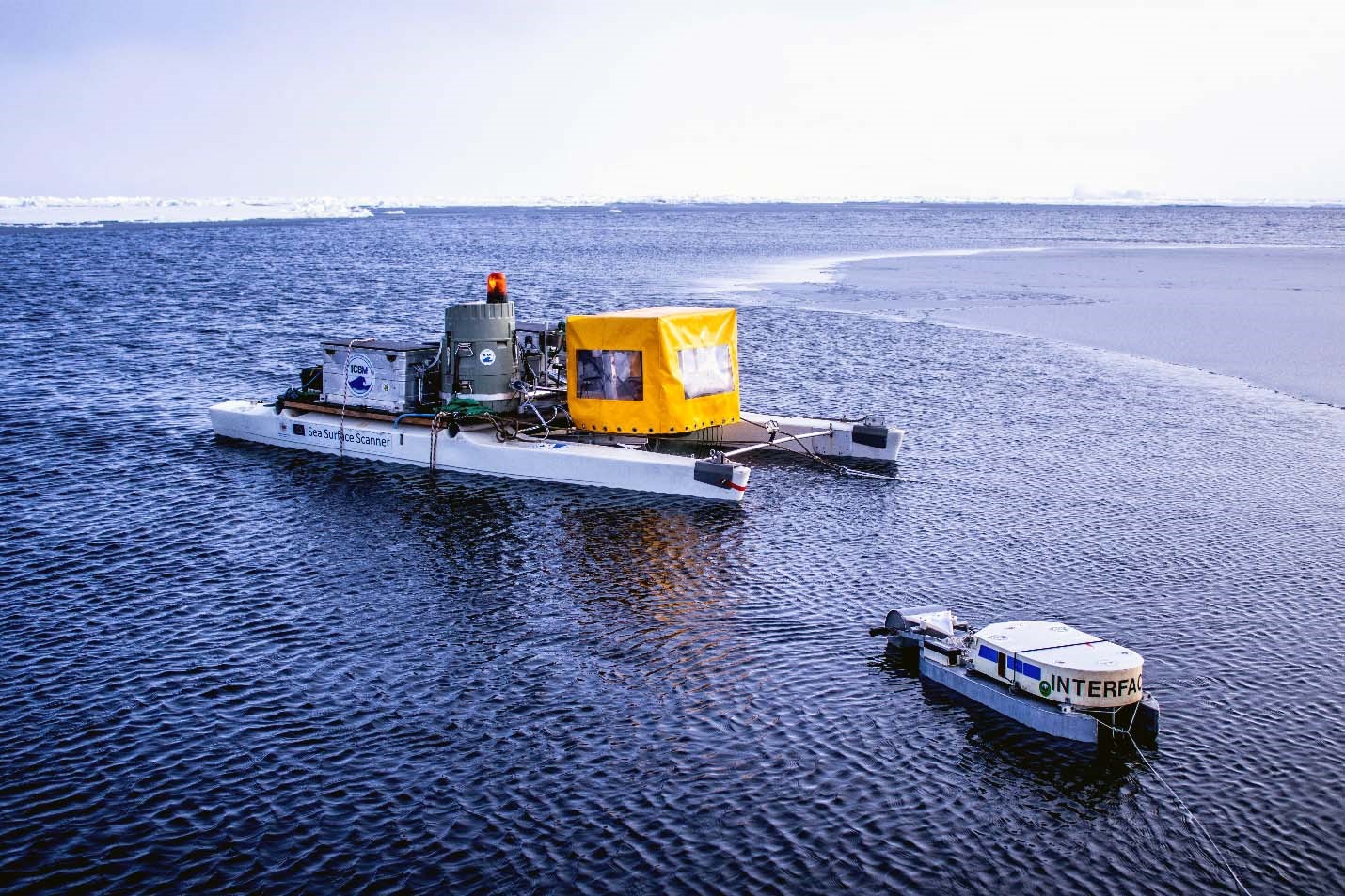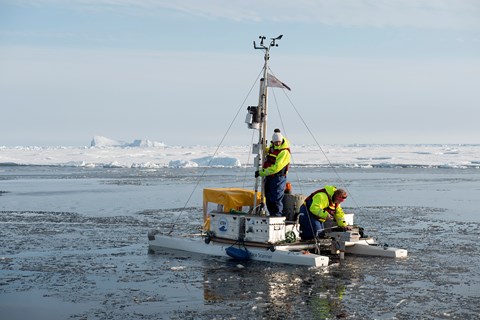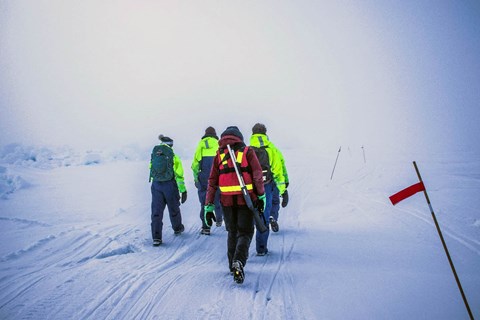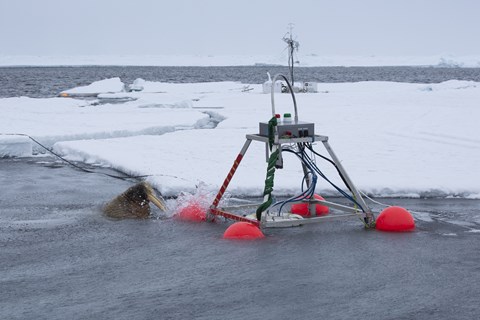The search for arctic biofilms: understanding the sea surface microlayer in an open lead
 Tiera-Brandy Robinson and Matthew Salter on the catamaran while repairs are made. Photo: Karin Alfredsson
Tiera-Brandy Robinson and Matthew Salter on the catamaran while repairs are made. Photo: Karin Alfredsson
The objective of this project was to investigate the chemical, physical and biological properties of the sea surface microlayer (SML) within an open lead in the High Arctic. In particular, I wanted to characterise and understand the abundance and enrichment of transparent exopolymer particles (TEP) in the SML compared to underlaying water (ULW) as well as other chemical and biological properties. I was interested in seeing what effects the constantly changing environment within an open lead, with its freezing and thawing patterns, would have on the formation and production of TEP and how TEP in turn might affect such changes.
The SML plays a vital role in air-sea transfers because it acts as the doorway through which all processes must pass. So, for example, the thickness of this “doorway” can greatly affect the transfer rate of marine particles released into the atmosphere and the CO2 intake from the atmosphere. Along with surfactants, gel particles like TEP are major components in forming these thick SML “doorways”.
My work was focused on the open lead where I took daily water samples for my research and the other scientists. The SML is a valuable but physically difficult sample to collect. My role on the cruise was to get large volumes of SML for all research groups.
I brought a catamaran attached with a high-volume glass plate sampler to collect these large volumes. This was the catamaran's maiden voyage into arctic conditions, but it allows us to sample over 6 times the volume we can sample with normal glass plate dipping techniques.
Most of my samples are discrete water samples which will be processed later in the lab. However, preliminary temporal data for pH, temperature and salinity probes have shown a distinct difference in changes over time at differing depths, with the SML acting as a unique layer separate from the ULW.
Tiera-Brandy Robinson
Carl von Ossietzky University of Oldenburg



